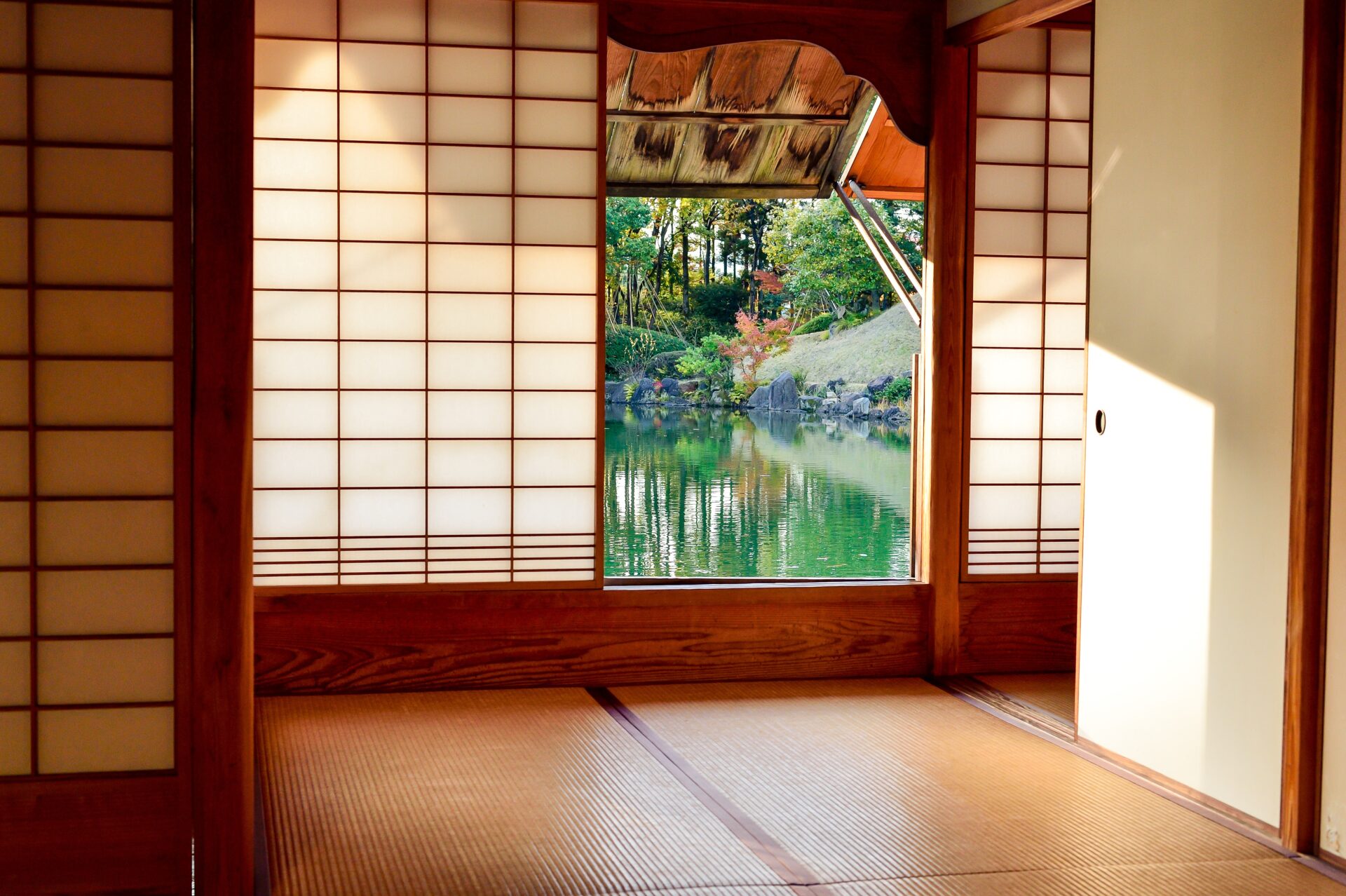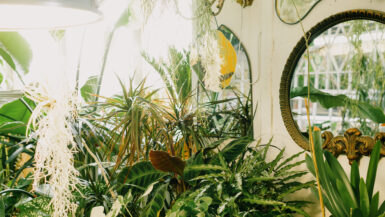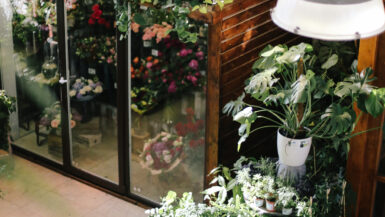Welcome to our comprehensive guide on How to Create a Living Wall with an Indoor Vertical Garden. This article will explore the art and science of transforming interior spaces into green oases with lush foliage and vibrant blooms. We will delve into the core topics of vertical garden design, plant selection, installation techniques, and maintenance tips, ensuring you have all the necessary information to create a thriving and sustainable indoor garden. Whether you are a seasoned horticulturist or a green-thumbed novice, this article will provide valuable insights into indoor vertical gardening, enabling you to breathe new life into your home or office environment. So, let us embark on this verdant journey together and discover the endless possibilities that await within the realm of living walls.
Choosing the Perfect Wall for Your Indoor Vertical Garden
Selecting the ideal wall for your indoor vertical garden is crucial for the success of your living masterpiece. The right location will ensure that your plants receive the required light, temperature, and humidity conditions and maximize your garden’s aesthetic appeal.
This section will discuss the key factors to consider when selecting the perfect wall for your indoor vertical garden and offer some innovative suggestions for incorporating living walls into children’s spaces.
Lighting Conditions: Natural and Artificial
One of the primary factors in choosing the ideal wall for your indoor vertical garden is considering the amount of available light. Plants require different light intensity levels for optimal growth, so it is essential to understand the light requirements of your chosen plant species. If your space offers ample natural light, a wall adjacent to a window or a well-lit area will be ideal. However, if natural light is limited, consider installing artificial lighting, such as LED grow lights, to provide the necessary illumination for your plants to thrive.
Temperature and Humidity Considerations
Another critical aspect to consider when selecting a wall for your indoor vertical garden is the ambient temperature and humidity levels. Most indoor plants prefer a stable temperature range of 65-75°F (18-24°C) and a humidity level between 40-60%. Avoid placing your living wall near sources of extreme heat or cold, such as radiators or air conditioning vents, as this can cause stress to your plants and impede their growth.
Structural Integrity and Waterproofing
The weight of your indoor vertical garden, including the plants, growing media, and irrigation system, can be significant. Therefore, it is vital to ensure that the chosen wall can support the added load. Consult with a structural engineer or an experienced contractor to assess the wall’s integrity and make any necessary reinforcements. Additionally, proper waterproofing is essential to prevent water damage and mold growth. Consider installing a waterproof membrane or barrier behind the garden to protect your wall and maintain a healthy environment for your plants.
Creating a Child-Friendly Vertical Garden
Indoor vertical gardens provide an excellent opportunity to introduce children to the wonders of gardening and the natural world. A living wall in a playroom or bedroom can improve air quality and stimulate a child’s imagination and creativity. For more ideas on creating a captivating and educational indoor vertical garden for children, check out our article on How to Create an Indoor Vertical Garden.
With careful consideration of these factors, you will be well on your way to selecting the perfect wall for your indoor vertical garden. Ultimately, the success of your living wall will depend on the harmony between your plant choices, the growing conditions, and the location’s aesthetics. By assessing these elements, you will create a thriving and visually stunning indoor garden that will bring life and energy to your space.
Maintenance Tips for a Healthy and Beautiful Living Wall
A thriving and visually stunning indoor vertical garden results from thoughtful planning, design, and diligent maintenance. This section will discuss essential maintenance tips to keep your living wall healthy, beautiful, and vibrant. These practical recommendations will ensure that your indoor vertical garden remains a source of pride and joy for years.
Regular Watering and Irrigation Monitoring
One of the most critical aspects of maintaining a healthy living wall is ensuring that your plants receive the appropriate amount of water. Depending on your chosen plant species and growing medium, this may require daily or weekly watering. Automated irrigation systems can simplify this process and help maintain consistent moisture levels. However, it is still essential to regularly monitor the system for leaks, clogs, or other malfunctions that may affect your plants’ health.
Pruning and Trimming for Optimal Growth
Regular pruning and trimming are vital for maintaining your indoor vertical garden’s aesthetic appeal and health. By removing dead or damaged leaves and branches, you encourage new growth and prevent the spread of diseases. Additionally, keeping plants well-groomed helps maintain airflow and ensures that each plant receives adequate light. Aim to inspect your garden every few weeks and trim as needed to maintain your desired appearance.
Nutrient Management for Robust Foliage and Blooms
Providing your plants with the necessary nutrients is crucial for their growth and overall health. Depending on your chosen growing medium, this may involve adding slow-release fertilizer granules or using a liquid fertilizer with a suitable nutrient balance. Regularly test the pH levels of your growing medium and adjust as needed to maintain optimal nutrient availability for your plants.
Pest and Disease Control: Prevention and Treatment
Indoor vertical gardens can sometimes attract pests or be susceptible to diseases. Regularly inspect your plants for signs of infestation or illness, such as discolored leaves, wilting, or stunted growth. Early detection and treatment can prevent the problem from spreading to other plants. Use natural pest control methods, such as introducing beneficial insects or applying organic pesticides, to minimize the risk of harm to your plants and the surrounding environment.
Replacing Plants and Rotating Varieties
Over time, some plants in your living wall may outgrow their space or lose their vigor. Periodically replacing plants and rotating varieties can help maintain your indoor vertical garden’s visual appeal and overall health. Introducing new species can also add fresh interest and excitement to your living wall, keeping it dynamic and engaging.
Following these maintenance tips will ensure that your indoor vertical garden remains a showstopping centerpiece in your space. Regular care and attention will keep your living wall healthy and vibrant, providing a deeper connection to your plants and a greater appreciation for the beauty and wonder of nature.
Selecting the Right Plants for a Thriving Living Wall
When designing your indoor vertical garden, choosing the right plants is crucial for creating a flourishing and visually appealing living wall. This section will explore the essential factors to consider when selecting plants for your living wall and some popular options that are well-suited for indoor vertical gardening. With the proper selection of plant species, your indoor vertical garden will thrive and transform your space into a lush, green sanctuary.
Considering Light, Temperature, and Humidity Requirements
The first step in selecting the right plants for your living wall is understanding each species’ specific light, temperature, and humidity requirements. Assess the conditions of your chosen wall location and select plants whose needs align with the available resources. For example, choose plants that thrive in bright, indirect sunlight if your living wall will receive ample natural light. Conversely, opt for plants tolerating low-light conditions if your space has limited light. Additionally, consider your room’s temperature and humidity levels and select plant species that will flourish within those parameters.
Opting for Low-Maintenance and Hardy Species
One key to a successful indoor vertical garden is selecting low-maintenance and resilient plants. Many popular indoor plants, such as pothos, spiders, and snake plants, are well-suited for vertical gardening due to their hardy nature and adaptability to various growing conditions. These plants are easy to care for and help create a lush, complete look for your living wall without requiring excessive maintenance.
Creating a Visually Stunning Display with Plant Variety
Combining different plant species with varying textures, colors, and growth habits can create a visually engaging display for your living wall. Consider incorporating plants with trailing or cascading growth habits, such as ivy or string of pearls, alongside upright or bushy species like ferns or peace lilies. Including plants with brightly colored foliage or flowers, such as bromeliads or begonias, can also add a pop of color and visual interest to your indoor vertical garden.
Factoring in Plant Size and Growth Rate
When selecting plants for your living wall, consider each species’ mature size and growth rate. Choose plants that will not outgrow their space too quickly, as this can lead to overcrowding and competition for resources. Slow-growing plants or those with a compact growth habit are generally ideal for indoor vertical gardens. However, if you invest time in regular pruning and maintenance, you can incorporate faster-growing species to create a dynamic and ever-changing display.
Popular Plant Options for Indoor Vertical Gardens
With these factors in mind, here are some popular plant options for indoor vertical gardens:
1. Pothos (Epipremnum aureum) – A versatile trailing plant with heart-shaped leaves that thrives in various light conditions.
2. Spider Plant (Chlorophytum comosum) – An easy-to-grow plant with arching leaves and small white flowers, suitable for most indoor environments.
3. Snake Plant (Sansevieria) – A low-maintenance plant with upright, sword-like leaves that tolerate low-light conditions.
4. Ferns (Various species) – Lush, feathery plants that thrive in humid environments, such as Boston and maidenhair ferns.
5. Philodendron (Various species) – Trailing or climbing plants with attractive foliage, suitable for bright and low-light conditions.
By carefully considering each plant species’ specific requirements and characteristics, you can create a thriving living wall that enhances your indoor space aesthetically and contributes to a healthier, more vibrant environment. With the proper plant selection, your indoor vertical garden will be a stunning addition to your home or workplace, providing a touch of nature and a sense of tranquility.
Step-by-Step Guide to Installing Your Indoor Vertical Garden
Creating an indoor vertical garden can seem daunting, but with the right approach and guidance, you will have your living wall up and thriving in no time. This section presents a step-by-step guide to installing your indoor vertical garden, from selecting the right materials and plants to establishing a proper irrigation system. Each subsection will provide practical tips and insights, ensuring your living wall installation process is smooth, enjoyable, and ultimately successful.
Step 1: Gather Your Materials and Tools
The first step in installing your indoor vertical garden is to gather the necessary materials and tools. Depending on the specific design and structure of your living wall, this may include items such as:
1. Vertical garden modules or planters
2. Mounting brackets or supports
3. Waterproofing membrane or barrier
4. Potting mix or other growing medium
5. Irrigation system components (e.g., drip lines, tubing, emitters)
6. Selected plants
7. Basic gardening tools (e.g., trowel, pruner, gloves)
Having all your materials and tools in place before you begin will ensure a smooth installation process and prevent unnecessary delays or complications.
Step 2: Prepare and Waterproof the Wall
Before installing your vertical garden, it is essential to prepare the wall and ensure it is adequately waterproofed. Start by assessing the wall’s structural integrity and making any necessary reinforcements. Next, install a waterproof membrane or barrier to protect it from moisture damage and mold growth. This step is crucial for maintaining a healthy environment for your plants and safeguarding the longevity of your living wall.
Step 3: Install the Vertical Garden Structure
You can install your chosen vertical garden structure with your wall prepared and waterproofed. This may involve attaching mounting brackets or supports to the wall, assembling modular planters, or building a custom framework tailored to your specific design. Follow the manufacturer’s instructions or consult an experienced professional to ensure a secure and stable installation.
Step 4: Plant Your Indoor Vertical Garden
Now that your vertical garden structure is in place, it’s time to add your plants. Fill the planters or modules with your chosen growing medium, ensuring it is adequately moistened and conditioned for your plants. Carefully transplant your selected plant species into the growing medium, not damaging the roots or foliage. Arrange your plants according to your design plan, considering light requirements, growth habits, and visual appeal.
Step 5: Establish an Irrigation System
A well-designed irrigation system is essential for maintaining a healthy and thriving indoor vertical garden. Depending on your specific needs and preferences, this may involve installing a drip irrigation system, incorporating self-watering planters, or setting up a manual watering schedule. Regardless of your chosen approach, regularly monitor the moisture levels in your growing medium and adjust your watering practices to maintain optimal hydration for your plants.
Step 6: Monitor and Maintain Your Living Wall
With your indoor vertical garden installed and irrigated, it’s time to monitor and maintain your masterpiece. Regularly inspect your plants for signs of stress, disease, or pest infestations, and address any issues promptly to prevent them from spreading. Prune and trim your plants as needed to maintain their appearance and health, and replenish nutrients in the growing medium to support robust growth. By diligently caring for your living wall, you will ensure it remains a vibrant and enchanting focal point in your space for years to come.
Following this step-by-step guide to installing your indoor vertical garden, you can transform your interior environment into a lush, green sanctuary. With careful planning, preparation, and maintenance, your living wall will not only enhance the aesthetics of your space but also contribute to improved air quality and a greater connection to the natural world.
Essential Materials and Tools for Creating a Living Wall
Designing and constructing a living wall requires creativity, planning, materials, and tools. This section will explore the essential components and equipment to bring your indoor vertical garden to life. From the foundational structure to the finishing touches, these materials and tools will ensure a successful and rewarding living wall creation process.
Garden Modules or Planters: The Basis of Your Living Wall
Choosing garden modules or planters is crucial to your indoor vertical garden’s overall design and functionality. Various options include modular systems, pocket planters, and hanging containers. Research and select the best option that suits your design vision, budget, and environmental conditions.
Mounting Brackets and Supports: Ensuring Stability and Security
A secure and stable mounting system is vital to the longevity and safety of your living wall. Mounting brackets and supports should be chosen based on the weight and size of your garden modules or planters. Ensure that the mounting hardware selected is strong enough to support the weight of the plants, growing medium, and irrigation system.
Waterproofing Membrane or Barrier: Protecting Your Wall and Living Space
A waterproof membrane or barrier prevents moisture damage and mold growth on your wall and living space. Suitable options include plastic sheeting, rubberized membranes, or specialized waterproofing products for living walls. Proper installation and regular inspection of your waterproofing system will ensure a healthy environment for your plants and your home.
Growing Medium: Providing Optimal Support and Nutrition
Selecting the right growing medium for your living wall is crucial for the health and vitality of your plants. Various options include potting mix, coir, and specialized living wall substrates. When selecting the most suitable growing medium, consider the specific requirements of your chosen plant species and the environmental conditions in your space.
Irrigation System Components: Maintaining Adequate Hydration
A well-designed irrigation system is essential for the health and maintenance of your indoor vertical garden. Components for a drip irrigation system may include tubing, emitters, and a timer to automate the watering process. Alternatively, self-watering planters or manually watering your living wall are also viable options, depending on your preferences and available resources.
Plant Selection: The Heart and Soul of Your Living Wall
Choosing the right plants for your living wall is critical to creating a visually stunning and thriving indoor vertical garden. Research various plant species to find those well-suited for your specific environmental conditions, design goals, and maintenance preferences. A diverse selection of plants with varying textures, colors, and growth habits will ensure an engaging and dynamic living wall.
Basic Gardening Tools: Essential for Installation and Maintenance
Basic gardening tools are essential for installing and maintaining your living wall. These tools may include a trowel, pruner, gloves, and a watering can. Investing in high-quality tools will make the installation smoother and simplify the maintenance tasks required to keep your living wall healthy and beautiful.
Equipped with these essential materials and tools, you will be well-prepared to create a stunning and thriving living wall in your indoor space. By carefully considering each aspect of the installation process, from the foundational structure to the plant selection, you will ensure that your indoor vertical garden becomes a vibrant, captivating, and enduring focal point in your home or office.







Leave a reply